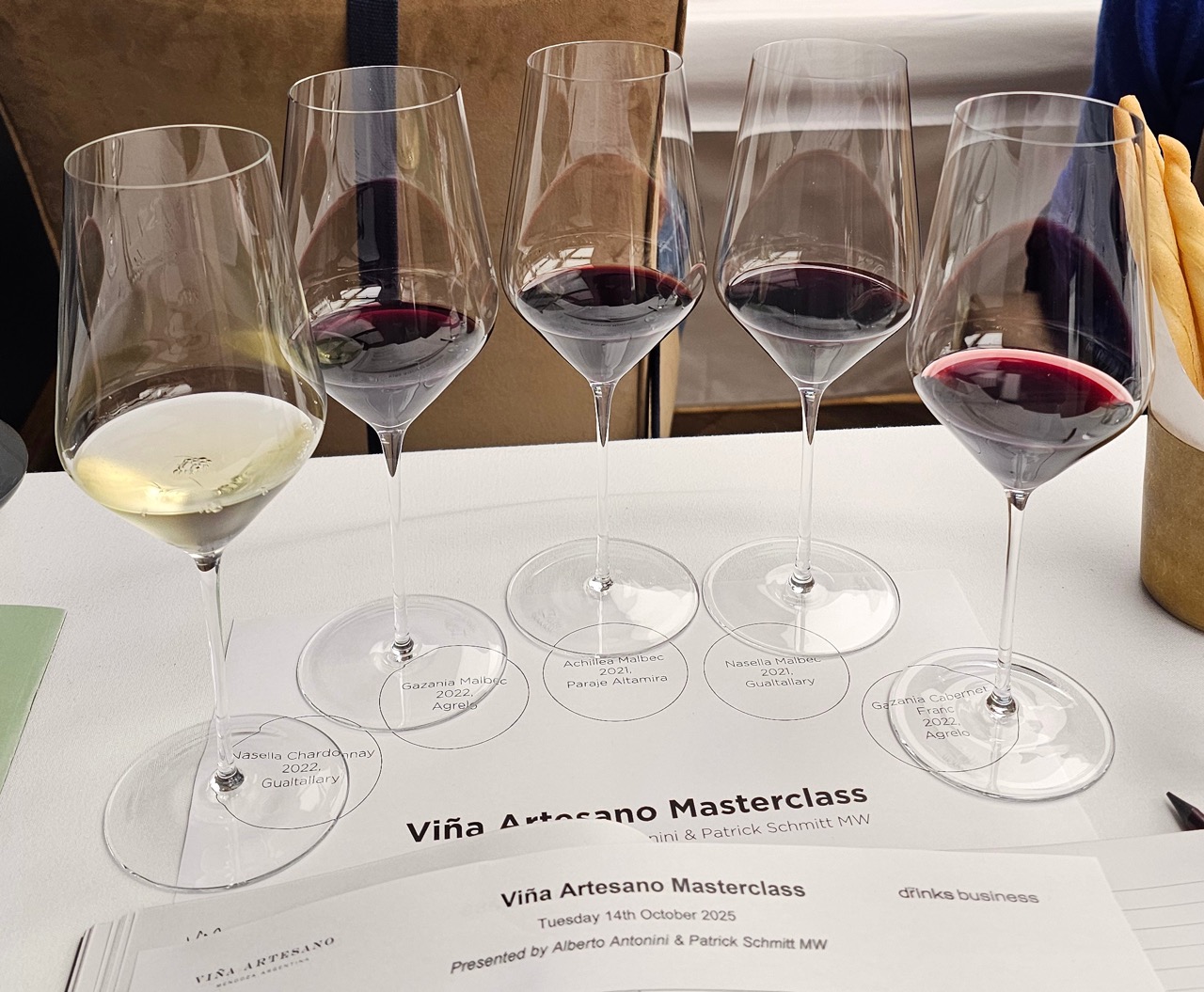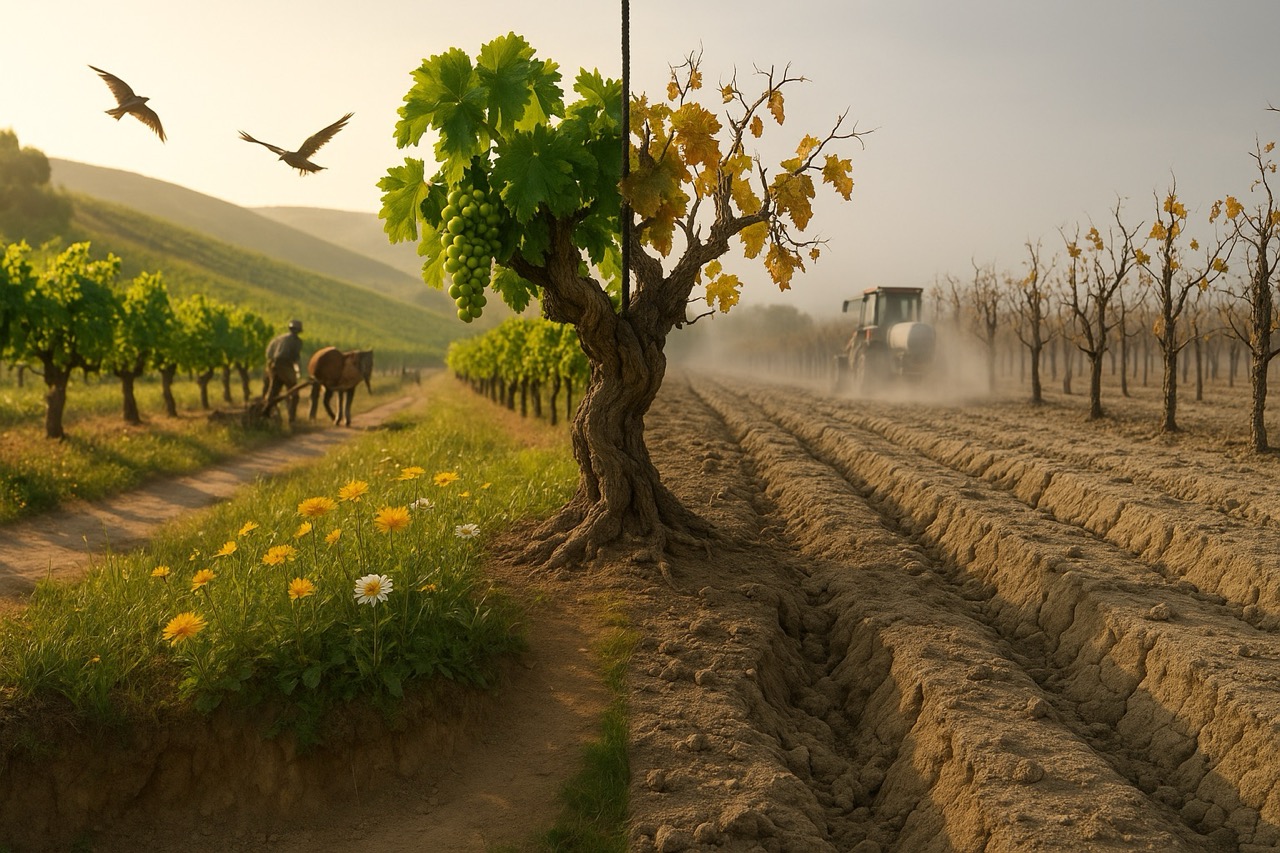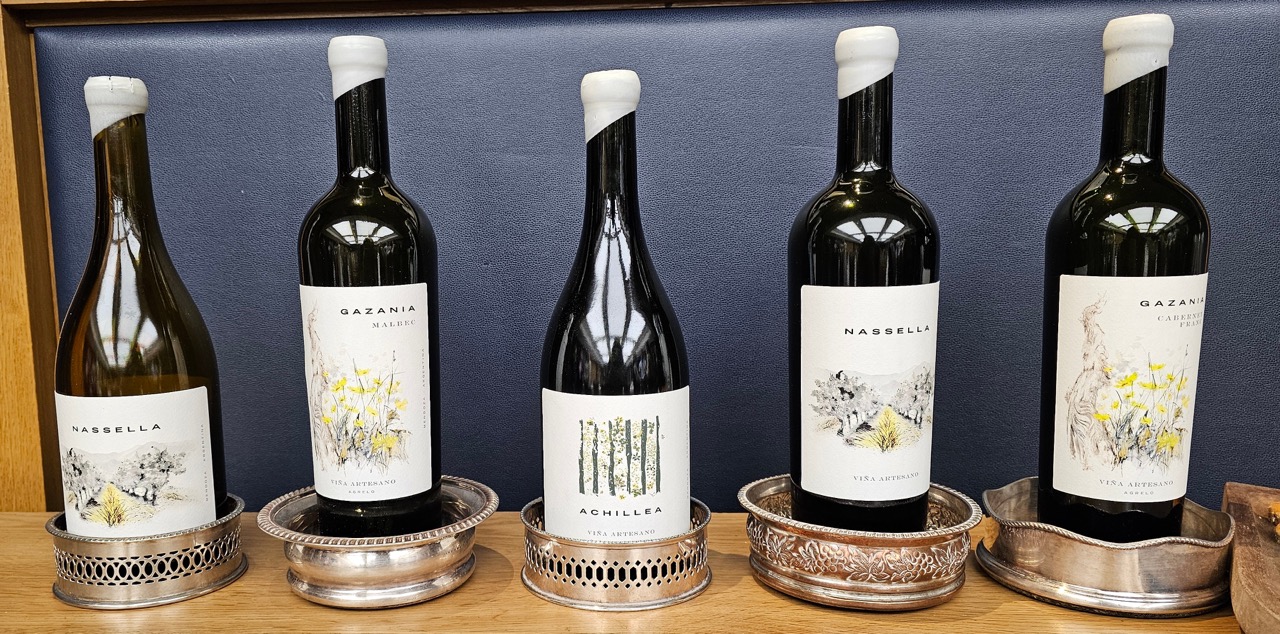17 Oct 2025
Flower power
Harnessing flora to make exceptional wines

Since commencing my WSET diploma I’ve become fascinated by more mindful viticulture, where winemakers leverage a deep understanding of the vineyard ecosystem to create pure expressions of wine, and more importantly, maintain and improve its health. They recognise the vineyard is an interconnected system made up of living matter, microbes and wildlife that are key to long term sustainable winemaking.
How does this translate into the final wine?
To test this, I attended a masterclass as part of the launch of Viña Artesano's new wine range. This project, more than five years in the making, saw world renowned winemaker Alberto Antonini and his team explore the impact of soil and vineyard ecology. Antonini is known for championing traditional and local winemaking techniques to create authentic terroir driven wines. Kicking off the masterclass he told a story of how he fell into this style of winemaking.
The tale of the two vineyards
Antonini was shown a picture of two vineyards.
To the left: 100 years old. Full of life, healthy and fertile. The wine grower deeply understands the terroir and tends to the vineyard with traditional practices that support its interconnected ecosystem.
To the right: 30 years old. Resembles the surface of the moon. Death, decay. Over-farming and excessive chemical treatments has depleted all nutrients and killed all vegetation. Life has been drained from the land.

Antonini's wine growing philosophy
This leads on to Antonini's wine growing philosophy which has been followed in creating the Viña Artesano range.
1. Deep understanding of the macro and micro terroir
In that 100 year old vineyard, the winemaker has lived and worked on the land for a lifetime, with that comes a deep knowledge of its terroir. Through observation they know exactly what support the land, soil and vine needs for this year and the future. In absence of this ingrained knowledge, technology can play a part, and Antonini confirmed how they use it to source the necessary data to know the vineyard and act appropriately.
2. The vineyard is connected to the place and farming connects to the vine
Ultimately their approach is anchored in how the flora can be used to support the vineyard. The range is named after the native crops grown in the vineyard; Achillea, Gazania and Nassella. Each has special properties used to support the vineyard ecosystem to; improve soil health, increase biodiversity (to help break down organic matter and release nutrients naturally), and improve soil structure and porosity (increasing oxygen availability and water retention). They also minimise what they take from the soil and return as much as possible, for example using left over skins and pulp as compost which recycles nutrients back into the soil.
3. Winemaking to preserve the fruit and terroir character of the wine
No winemaking processes are off the table, but they are utilised mindfully so as to not overpower the terroir and varietal expression. Antonini uses processes like skin contact, oak maturation, malolactic conversion and lees ageing but their use is monitored carefully so the impact is subtle. From the tasting there were no obvious aromatic enhancements like oak aromas but there were added structural and textural components.
Making wine in Mendoza
All of these wines were from appellations within Mendoza. The vineyards are at altitudes above 980m and up to 1,450m. Up here, the sunlight is more direct and intense which promotes colour and tannin development and the night time temperature drops considerably helping to retain high levels of acidity. Water availability is an issue and these vineyards cannot be dry farmed. Therefore, irrigation is essential. Antonini said that going into the project they assumed there would be no water. This forced design of the vineyard to use water as efficiently as possible.
What are the results of this approach?
The Argentinian Lineup

Viña Artesano, Nassella Chardonnay
Gualtallary Alto, Uco Valley
The intense sunlight here means the Chardonnay grapes have thicker skins. Pronounced, hints of apple, lemon, peach, pineapple and mango. Subtle struck match. Bread, pastry and cream. Some oak used but more for texture rather than contributing to aromatic complexity. High acidity, very crisp and refreshing. Long finish.
Viña Artesano, Gazania Malbec
Agrelo, Lujan de Cuyo
Deep Ruby. Delicate nose - floral elements, violet. Black plum, blueberry. Some liquorice. Long finish on the palate and as delicate as the nose but with more black fruit character. Tannins were very ripe and chewy.
Viña Artesano, Achillea Malbec
Paraje Altamira, Uco Valley
Deep Ruby. Delicate floral notes with black fruits coming through perhaps a bit more powerful than the Gazania. Long finish on the palate. More ripe and chewy tannins. Definitely could benefit from food or aeration to open up a bit more.
Viña Artesano, Nassella Malbec
Gualtallary Alto, Uco Valley
Deep Garnet. Earthier tone here with richer red fruit elements like black cherry, black plum. Lots of tannins, very ripe and chewy. But that’s not to say they aren’t well integrated.
Viña Artesano, Gazania Cabernet Franc
Agrelo, Lujan de Cuyo
Deep Garnet. Some vegetal elements here, albeit not unpleasant - bell pepper, balsamic, tomato leaf. I got more black fruits but towards the blue end, blueberry and blackberry. There was some sweetness, like a blueberry pie. Long finish with floral notes of violet. Medium (+) tannins but easier to drink than the Malbecs even with its structure.
A note on the reds
The reds had such an intensity of colour which was achieved via infusion, keeping the skins very wet and in contact with a large proportion of the juice. Interestingly, whole berry fermentation has been used which gives the reds a freshness while the stems contribute balsamic notes.
The mindful approach
As I explore the world of wine, I am seeing a common theme and I associate more mindful winemaking with better quality wine. I admit, there may be an emotional pull, as a romantic at heart I definitely get swept up by a compelling story.
But, from an environmental and sustainability perspective, it just makes sense to consider the whole vineyard as an interconnected ecosystem. On this journey, the winemaker needs to fully understand the whole and then make conscious decisions on what is best for the whole. It is this ideal that lends itself to quality.
I believe this is why you find more premium producers adopting sustainable, organic and / or biodynamic practices. It’s less about the underlying processes and more about the thought process that in the end sets the scene leading to healthy soils, vines and grapes which can be used to create quality.
Reflecting back to some of my most memorable wine experiences, at the heart there has always been this mindful approach.